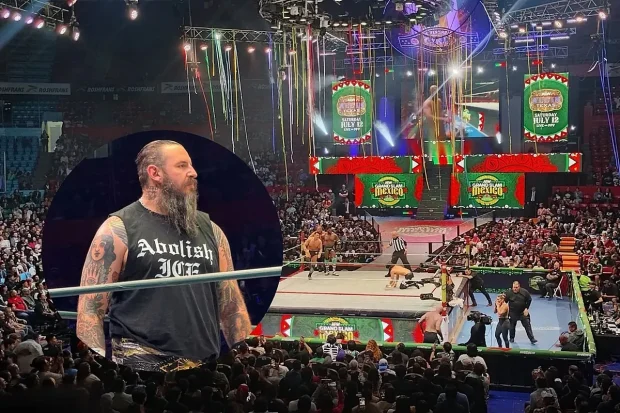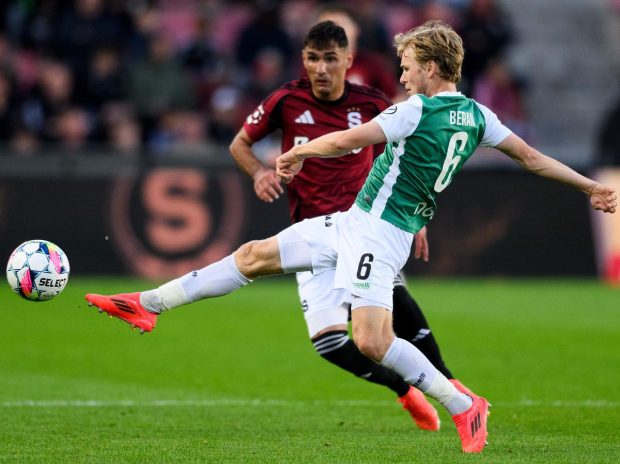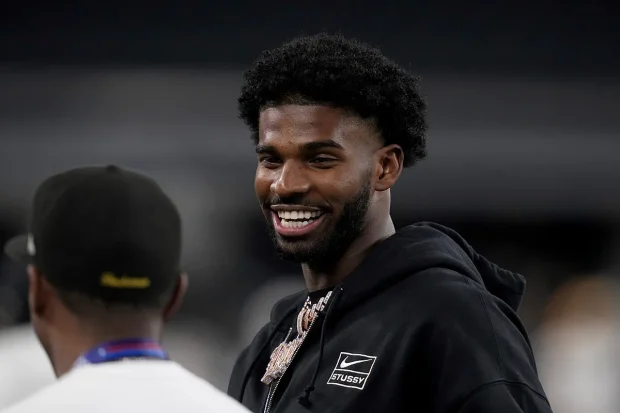
When The Athletic’s staff came together to pick who’s going to win the Stanley Cup at the start of the playoffs, not a single person chose the Carolina Hurricanes. When the field narrowed to eight teams at the conclusion of the first round, not a single person chose the Hurricanes.
And yet, there the Hurricanes were: one of the favorites to win the Stanley Cup by our internal model at the start of the playoffs (tied for fifth) and the favorite at the start of the second round. That sentiment was echoed by oddsmakers, who held the Hurricanes in similar esteem at both the start of the first and second rounds.
Advertisement
That led to one very important question from my editor, Ian Denomme: “Why?”
It’s a question likely echoed by many readers who are probably tired of the same old story when it comes to the Corsi Canes. It seems like every year they emerge as one of the favorites to win it all before flaming out in a barrage of perimeter shots. That this year’s version is so highly regarded may feel like the most inexplicable yet, given Carolina finished 10th in the league with 99 points. Over the previous four seasons, the Hurricanes were at least a top-three team during the regular season and earned those odds. This year, not so much.
So what gives?
For starters, the Hurricanes being the favorite does not mean they are considered the best team. We had them fifth to start the playoffs and they’ve since moved up to second. That’s a result of throttling the New Jersey Devils more than expected (with the best goal differential in the opening round), Playoff Connor Hellebuyck downgrading the Winnipeg Jets, and the Tampa Bay Lightning imploding. Even second may seem too high to some (Florida is first, by the way), but the reality is that the top of the league is very close. Closer than we’ve arguably ever seen.
There was not much separating the top 10 teams on paper to start the playoffs and there is not much separating the top seven at the start of the second round (sorry, Washington). What that means is that the path to the Cup becomes a lot more important and that’s where Carolina has a big advantage over the other top teams.
The Atlantic with Toronto, Tampa Bay and Florida was a gauntlet. The Central with Winnipeg, Dallas and Colorado was a gauntlet. The Pacific with Vegas, Los Angeles and Edmonton was a gauntlet. The Metropolitan division? Not so much (sorry, Washington).
Every other top team was going to have at least one coin-flip matchup en route to the conference final. The teams locked into the 2nd vs. 3rd matchup in each division — where arguably some of the league’s best teams landed (Colorado, Dallas, Florida, Tampa Bay) — were going to have two. Carolina, on the other hand, was going to get two matchups where the Hurricanes were heavily favored (sorry, Washington). The math was on their side, as it frequently is.
Here’s an overly simplified version of what that looks like at the outset.
The odds of winning the Stanley Cup are the culmination of the odds of winning each round. If Carolina starts at 70 percent in Round 1 and 65 percent in Round 2 (and hopefully after Game 1 against Washington, that’s no longer controversial), the Hurricanes would have a 45.5 percent chance of advancing to the conference final. Make them 45 percent underdogs in each of the next two rounds and their odds of winning it all are 9.21 percent. A contending team with a difficult path, like Florida, where the team still has a 55 percent chance of winning every round — including a matchup against the Hurricanes — would be at 9.15 percent. Just under the Hurricanes, despite being better than the Hurricanes.
Advertisement
The real math is a little more complex than that, where home ice matters (which Carolina has over Florida) and the chance of upsets sending a weaker team forward also matters. It’s also not as harsh on Carolina’s chances in the final two rounds, nor as generous to the hard-path contender, like Florida, whose odds would be closer to 52 percent in each series, especially as the road team the whole way.
The point is that the Hurricanes started the playoffs as the most likely team to end up in the conference final. With the other three semifinal matchups looking like virtual coin-flips, the Hurricanes also started the second round with the highest chance of advancing to the conference final. That’s literally half the battle.
The other half is being a genuinely good team worthy of that, which the Hurricanes still are.
The Hurricanes are very deep with few holes in the lineup, especially on the back end, where arguably no team is stronger from 1-to-6. They have a strong core headlined by Sebastian Aho, Seth Jarvis, Jaccob Slavin and a reinvigorated Andrei Svechnikov. They play a fierce forechecking style that generally serves teams well in the postseason. They control pucks and possession better than any other team. And their penalty kill is undeniably good. The Hurricanes are a contender on paper, not just because of their path. Even if they aren’t the best team, they’re still right there among them.
I understand completely why many would be out on that. I do — I watch them too.
Despite how good they are and how strong they play and how many chances they get and how few they allow, we’ve also all seen the same Hurricanes playoff game a million times. It’s the one where they outshoot the other team 75-12 and still manage to lose by one. This team lacks the kind of game-breaking oomph that’s frequently seen on Cup champions, the kind that would limit those one-goal losses when it matters most. After seeing them fail the same way over and over again, I get it. And it’s easy to pick another contender with a difficult path if you believe they’d match up well against the Hurricanes in the final two rounds — even if the math is technically in Carolina’s favor by virtue of being likelier to get there.
Advertisement
But this is still a strong team. A consistent one at that, one with a tried-and-true identity that’s been the only team to win at least one round in each of the last five seasons. In that time, the Hurricanes are tied with the Avalanche for the most regular-season points with 519.
And while they may not have earned as many points this season, part of that is a result of Frederik Andersen suiting up for only 22 games. A healthy Andersen is a big deal.

A healthy Frederik Andersen is an X-factor for the Hurricanes. (Ed Mulholland / Imagn Images)
A lot of folks will point to Carolina’s goals percentage at five-on-five of 51.4 percent, 13th in the league, as proof of the team being Corsi merchants. It’s a fair point — this team can’t finish. That’s four percentage points below the team’s league-leading xG and eight below their shot attempt rate. The Hurricanes’ goals-for rate is consistently well below their expected goals-for rate to the tune of 0.4 per 60 over the last five years (which the model does account for, by the way).
What’s missing from that analysis is that this is the first time in the last five years that the Hurricanes have allowed more goals than expected at five-on-five. And that has a lot to do with Andersen’s lack of availability.
This season, Andersen saved 0.25 goals above expected per game at five-on-five, while Pyotr Kochetkov was at -0.03 and Spencer Martin at -0.57. Last season, the difference was even more lopsided (though Martin was less of a liability at least). Over the last two seasons, Andersen has only played 38 games, but in that time has saved 0.3 goals above expected per game at five-on-five. That ranks seventh in the league. Kochetkov, in contrast, ranks 49th out of 62 goalies at -0.03.
Planning on Andersen is rarely a smart bet, but for these playoffs, he is in fact available and seemingly healthy — something that isn’t reflected much in the team’s record this season. With Kochetkov instead, the model would’ve ranked the Hurricanes 10th going into the playoffs, for what it’s worth.
The Stanley Cup is the hardest trophy to win in sports. Mostly because even if a team is the best, there are a whole lot of other variables in play that can spoil a team’s chances. The best bet is usually to get as many kicks at the can as possible — to always be in a position to go the distance.
Advertisement
That’s what Carolina has done over the last five seasons and it’s what they’ll continue to do for seasons to come. It may never work, but it only has to work once for eternal glory. And they’re giving themselves as good a chance as any to make it happen annually.
The Hurricanes may not be the league’s best team, but they’re still a damn good one worthy of winning it all. This year, they have a path that’s highly in their favor to make it happen.
— Data via Evolving-Hockey
(Top photo of Sebastian Aho, Seth Jarvis and Shayne Gostisbehere: Jared C. Tilton / Getty Images)
This news was originally published on this post .










Be the first to leave a comment